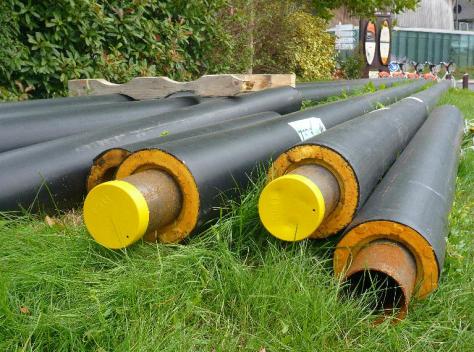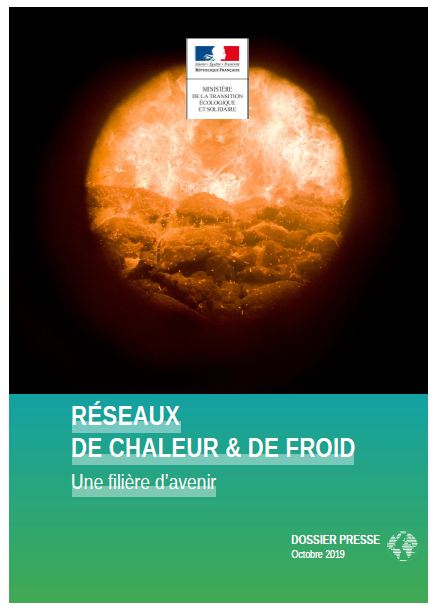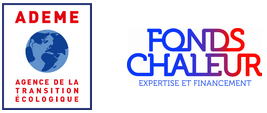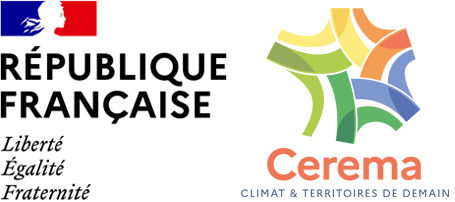District Heating and Cooling in France
Figures and outlook

District heating systems were mainly developed in France after 1950, mostly by the cities as a public service. Today, they appear as a way to use massively renewable energies and recovery such as heat from waste incineration plant, biomass, industrial heat, geothermal, solar, etc. Mostly present in dense urban areas, the districts heating and cooling (DHC) are now supplied with 60% of renewable and recovered energies. However, district heating represents only 6% in the national heat sector for domestic heat water and heating system.
On the other hand, cooling networks are much more recent and are experiencing significant growth.
French district heating and cooling in figures (2020)
On behalf of the Service of the data and the statistical studies of the Ministry of Ecological Transition, a national survey is conducted each year on the DHC by the National Union of Urban Heating (SNCU). Based on data collected from all managers of DHC identified in France, this survey provides a lot of technical and economic information.
833 district heating networks
32 disctrict cooling networks
More information about the national survey
The national target for DH is to reach at least 24,4 TWh of renewable energy and recovery by 2023 and 39.5 TWh by 2030 (compared to 15,3 TWh in 2020). In order to converge towards this ambitious objective, several actions must be carried out such as :
- creation of new DH when it is feasible technically and economically ;
- extension of existing DH, for example during urban development projects ;
- the development of renewable energy and recovery to replace fossil fuels within existing DH.
An action plan to accelerate the deployment of renewable heating and cooling networks

In 2019, a working group brought together a total of about 100 participants, with the strong involvement of several of them, in particular the SNCU (National Union of Urban Heating), AMORCE (association of communities and professionals on energy climate policy and waste management), and the FNCCR (National Federation of Local Authorities), supported by the expertise of the French Environment and Energy Management Agency (ADEME), the Centre for Studies and Expertise on Risks, the Environment, Mobility and Development (CEREMA), and the Directorate General for Energy and Climate (DGEC), which was in charge of the workshop.
At the end, the government decided to act a 25 actions plan, regarding:
- Mobilization and attractiveness of networks,
- Consumer information and protection,
- Economic competitiveness of networks,
- Greening of the energy delivered by the networks,
- Innovation, Research & Development.
For example, one of the actions is to raise awareness in all french cities over 10 000 inhabitants that do not have a DHC system on their territory.
The Cerema and AMORCE are participating in this action and have already raised awareness in more than 150 cities.
The obligation to connect to the DHC
The classification procedure for a heating or cooling network makes it possible to impose the connection of new buildings or buildings replacing the heating or cooling installation, located in the priority development area of the network.
Since April 2022, under certain circumstances (more than 600 DHC are concerned), the classification of the DHC is automatic and municipalities have to define a “priority development area” before July 2023.
Depending on how municipalities will define these zones, this may be a game changer for DHC in the years to come.

Financial support
District heating and cooling projects can benefit from different types of financial aids :
- The Heat Fund (in french : « Fonds Chaleur »), 2 600 M€ were given to 6000 projects from 2009 to 2020 for a 35,5 Twh/an of heat production;
- Reduced VAT (from 20% to 5,5%) for the consumers (direct impact on the energy bill) for DHC with more than 50% renewable and recovered energies;
- Energy savings certificates (CEE) can be used to connect buildings to the DHC.
Examples of projects and studies about DHC in France
More information by clicking on the titles
Life "Heat & Cool" PACA
A European project that aims to identify areas where DHC could be developed in the Provence-Alpes-Côte d'Azur region in southern France.
France Chaleur Urbaine
A public service to facilitate and accelerate connections to district heating networks.
Paris Saclay
The first so called "5th generation" DHC network.
